“For Alto Adige, white wine will always be our trump card but we need to open our minds to new varieties and frankly, adapt to what has been made possible here in this southern area of Alto Adige because of global warming,” says Alois Lageder.
Even by the standards of an area so famed for its majesty and beauty, the drive from Alto Adige’s main town, Bolzano, to the predominantly German-speaking village of Magre is pretty damn spectacular. With sparkling Lake Caldaro on your right and mountains all around, you drive past some of this wine region’s most illustrious producers including Elena Walch and J. Hoffstatter, famous for their Pinot Biancos, Pinot Grigios and Gewürztraminer.
You also pass by two of Alto Adige’s best cooperatives, Cantina Kaltern, famous for its take on the region’s historic red variety, Sciava, and Cantina Tramin, with its new green metal and glass winery in the village of Tramin which is claimed by some to be the original home of Gewürztraminer.
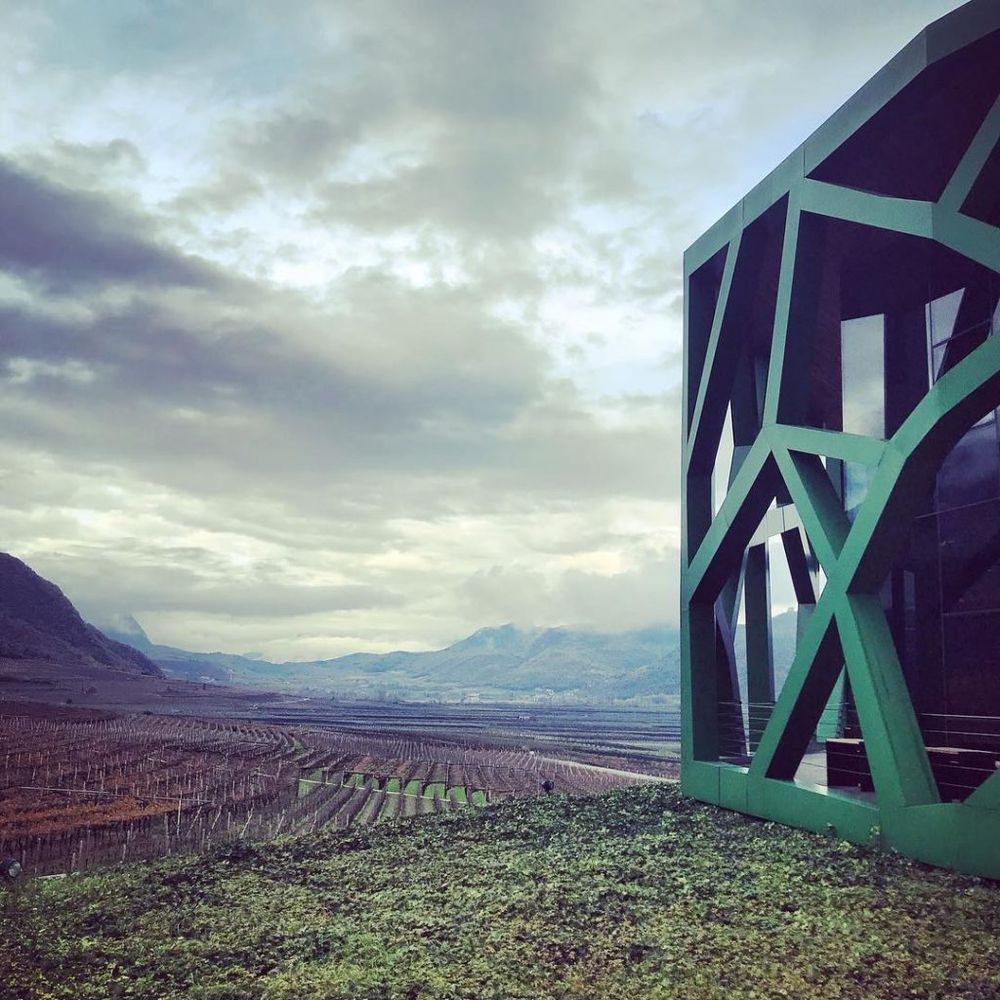
“Our wines are special because of our proximity to the mountains and to nature and we are always building on this unique gift.”
Unforgettable though the journey is, it is the final destination – Magre – that provides the truly memorable highlight for any wine lover.
Since 1974, this has been home to Alois Lageder, one of Alto Adige’s best regarded producers and famous for his biodynamic wines, inspired at least in part by the late, great George Steiner. Like other methods of organic farming, biodynamics emphasises the use of manure and composts, excludes the use of any chemicals or pesticides, and very much takes a holistic approach to, in this case, vineyard management. As Wikipedia concisely puts it, “It treats soil fertility, plant growth and livestock care as ecologically inter-related tasks emphasising spiritual and mystical perspectives.” Or as the Lageder website says, on its opening page, “Cultivating Nature as a Habitat of Life”

Magre provides the truly memorable highlight for any wine lover
For Alois Lageder, who meets me in Vineria Paradeis, his popular restaurant filled today with visitors sampling current vintages, biodynamics is key to understanding his wines, and why they have become amongst the highest regarded in Alto Adige. All 50 hectares of the family’s own vineyards are managed strictly to biodynamic principles.
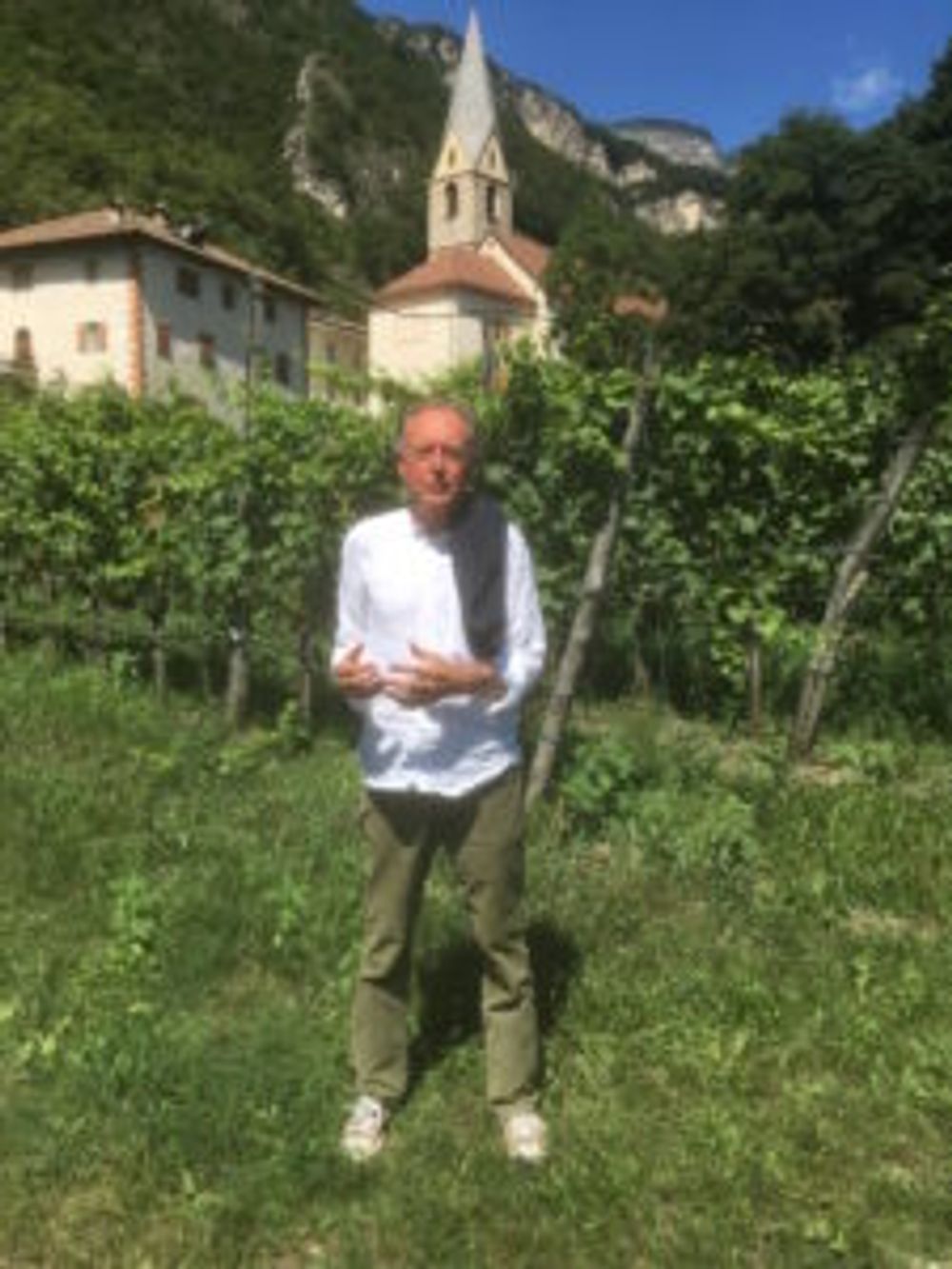
Alois Lageder
“You really have to work with nature and nature is diverse, and you must respect that,” he says, pointing to the olive trees growing amongst the vines and admitting that outside harvest time, particularly in the autumn and winter months, it is not unusual to see cows and sheep wandering the vineyards.
As regards making wine, he says the first step is to find the best grape variety for each terroir, taking into account the climate and soil differences. And taking into account the effects of climate change, which in this region – as elsewhere – has been dramatic.
“When I started out we used to harvest in October, now we start in late August or early September, depending on variety. Picking early – though obviously not too early – is key for our wines retaining their freshness and acidity and not showing too much alcohol.”
Lageder says global warming has led him to experiment with varieties that would have been frankly quite unimaginable in this Alpine region even ten years ago. He now grows Viognier and Assyrtiko as well as for me some unexpected red varieties, Cabernet Sauvignon and Tannat, alongside the more traditional local red varieties Schiava (aka Vernatsch and Trollinger) and the more weighty Lagrein.
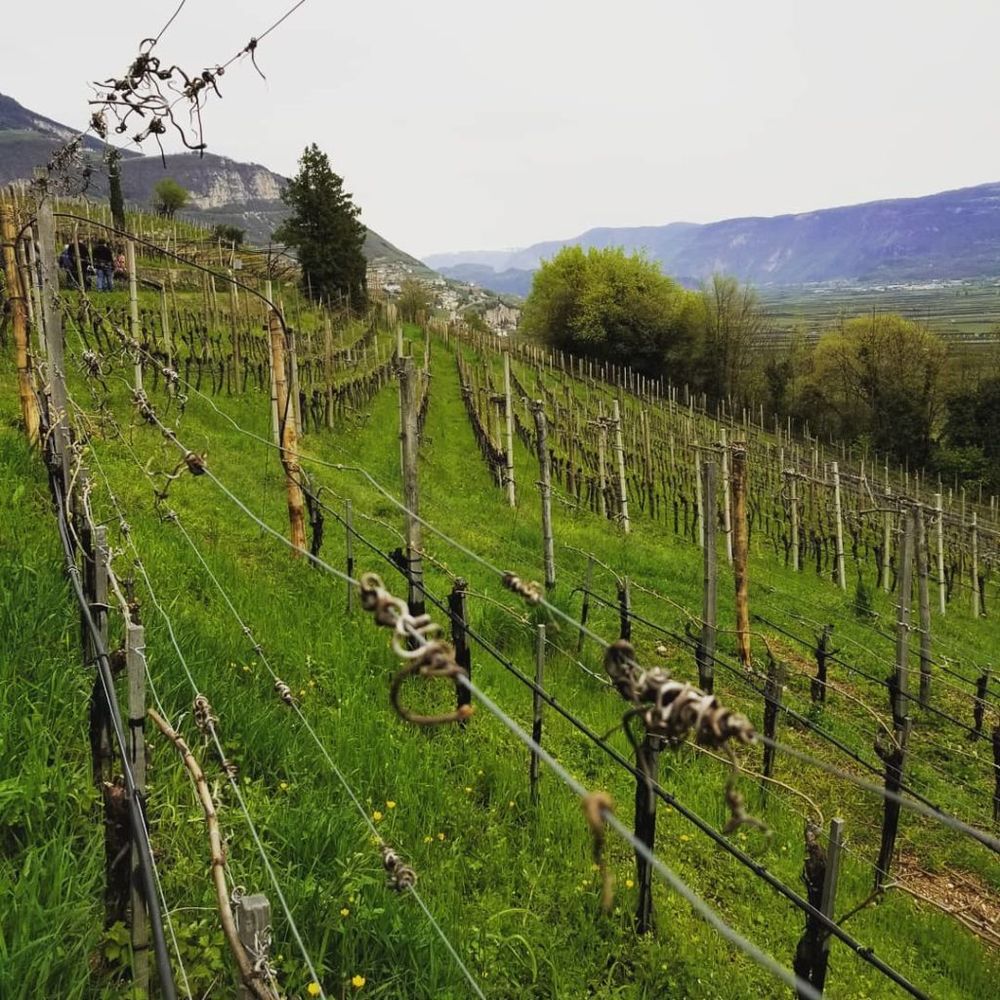
It’s not uncommon to see cows and sheep in the vineyards of this spectacular location
“For Alto Adige white wine will always be our trump card – it’s what we’ve become famous for in the past few decades. But we need to open our minds to new varieties and frankly, adapt to what has been made possible here in this southern area of Alto Adige because of global warming,” he says.
A tasting of some of Lageder’s wines – he now produces some one million bottles of around 30 wines grouped into various ranges – shows the extent of the ambition here, with wines made from estate fruit sitting alongside those made with fruit from the producers’ 90-odd growing partners, many of whom he has worked with for decades.
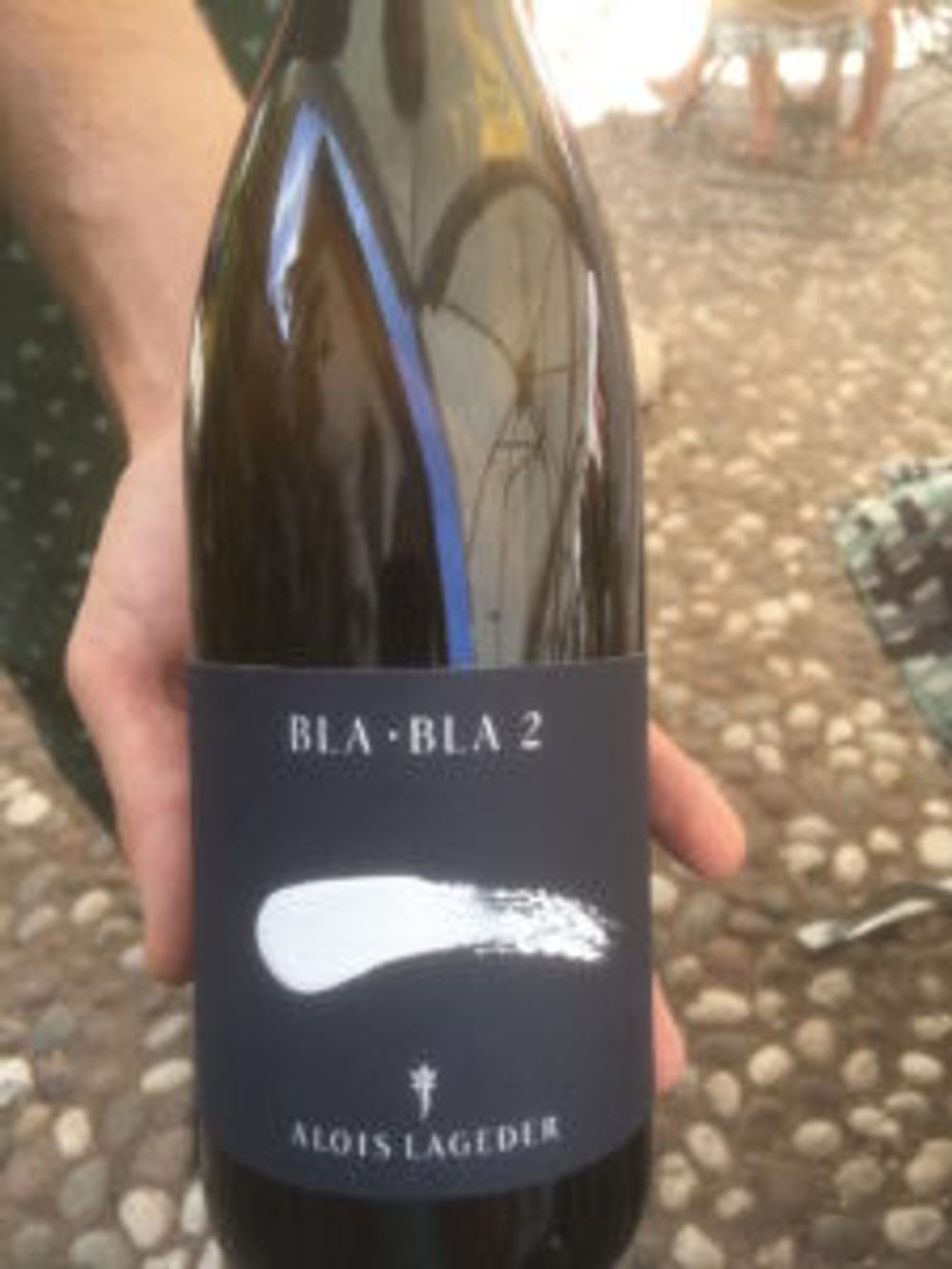
The Comets range explores new frontiers
The ‘main range’ showcasing the classical varieties of the region, are illustrated with labels that have symbols illustrating elements of the vineyard and cellar; next up are the ‘Compositions’ made from fruit taken from different vineyard sites; whilst the ‘Masterpieces’ are higher-end wines made from fruit taken from the best biodynamically maintained sites and are highly expressive and individualistic. Meanwhile the ‘Comets’ explore new frontiers and reflect Lageder’s desire to experiment and innovate.
“Yes, we probably make too many wines but that’s what makes us who we are. Our wines are special because of our proximity to the mountains and to nature and we are always building on this unique gift.
There are some real surprises here, not least the Cason Hirschprunn red made from 80% Tannat and 20% Mourvedre; very rich and fruit driven, almost tropical, yet checking in with just 12.5% alcohol. The Cason Hirschprunn white is a rich, moreish blend of local varieties including one new to me, an ancient almost extinct variety called Blatterle.
Amongst the whites, the Gewürtztraminer – most of which are made in Valle Isarco, to the north of Bolzano – are outstanding; the Am Sand 2017 , a rich, luxurious, almost dark yellow composition made partly with grapes infected with noble rot and grown in Magre, Lake Caldaro and Tramin is for me, the most impressive and age-worthy.
And the rosé is good too; the Lagrein rosé is a dark, full-bodied and food friendly riposte to anyone who thinks rosé should always be Provence pale.
All of Lageder’s Pinot Noirs are good, unsurprisingly, but what grabs my attention is the Krafuss 2016 (the 2014 is available here through Bibendum): fantastic balance and racy acidity but also wonderfully rich.
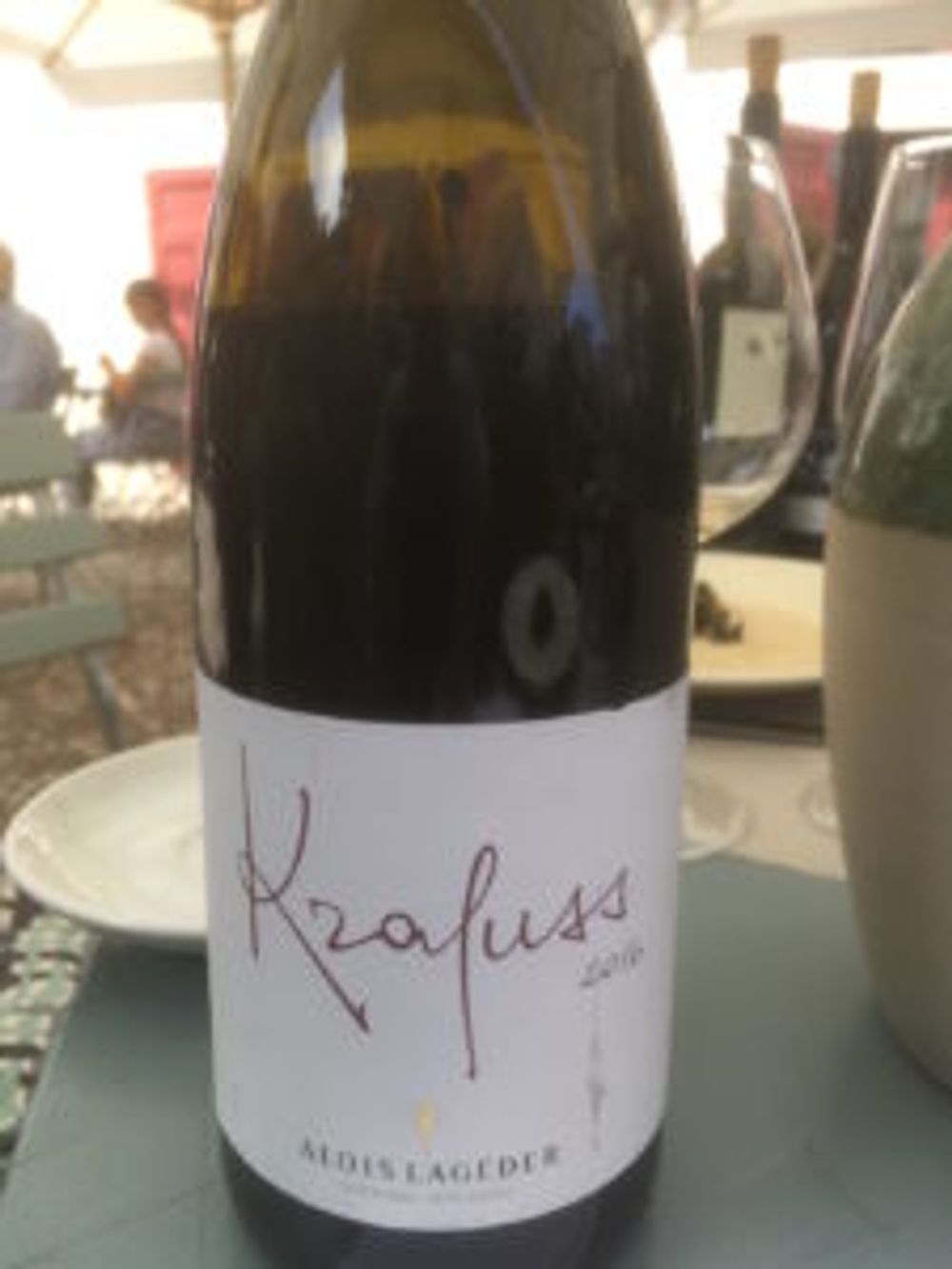
He is especially proud of his estate Cabernet Sauvignon, a variety which he says actually has a long tradition in this immediate region. Certainly, his Lowengang Cabernet Sauvignon 2015 is a full on Cab, lots of rich berry fruit supported by firm tannins; this is definitely one for ageing and also dispelling any suggestion that Alto Adige reds have to be light and fruit-driven.
But it is the local red varieties that somehow seem most distinctive. We taste two recent vintages of his Schiava, made from fruit grown in the Caldaro area, traditionally a strong place for the variety. The Romigsberg Schiava 2017 is a case in point; wonderfully juicy, with spicy, brambly fruit, but just 11.5%, this is a wine likely to be a big hit with the Metropolitan set, its simplicity hugely appealing.
“Schiava used to be the main planted variety in Alto Adige until producers woke up to the huge potential of aromatic whites here. And it still has a bad name amongst some, with people remembering how it was sold in big bottles. But things have really changed: either on its own or as part of a Magdalener blend (a Bolzano blend comprising usually 80-85% Schiava with 20-15% Lagrein) this is one of our most modern wines, and is great with local food,” he says.
Lageder says Schiava’s journey – from despised high yield variety to local treasure if treated carefully by producers – is symptomatic of the need to stay abreast of changing fashions. And indeed, in local Bolzano bars and restaurants, Schiava and Magdalener are appreciated by drinkers mindful of these wines’ heritage but also because they appreciate easy drinking wines with lower tannins.
“The key must be learning to adapt and change, and also innovate, not just because of evolving consumer taste but because of the environment and our changing climate. Only those producers who do that will manage to be successful over the longer term,” he says.
Bibendum Wines is the exclusive importer for Alois Lageder wines.
































